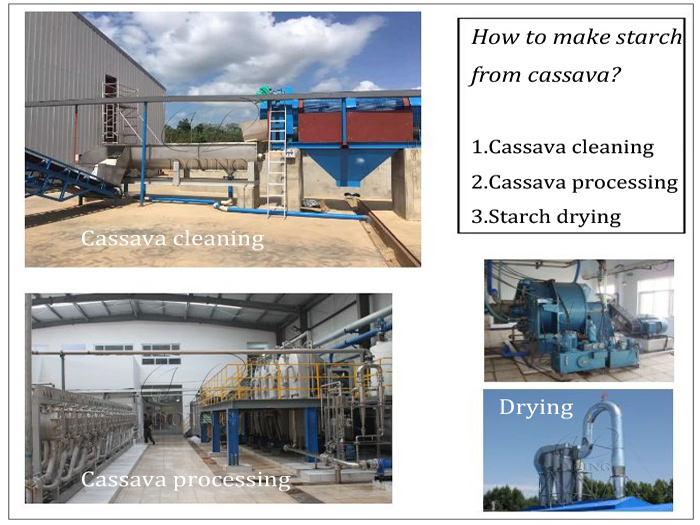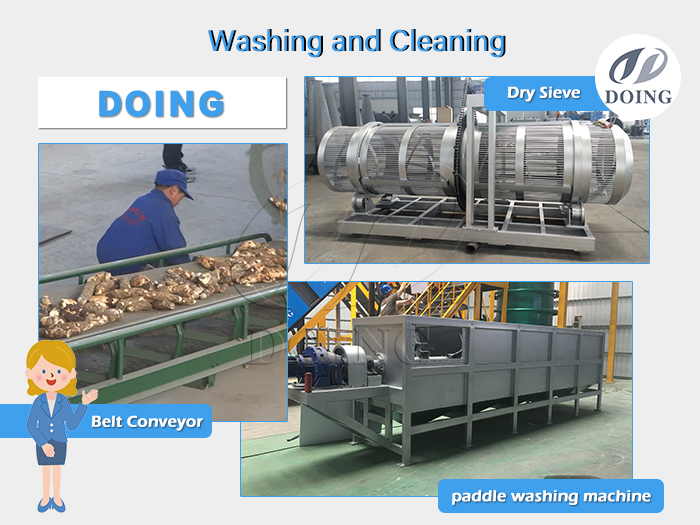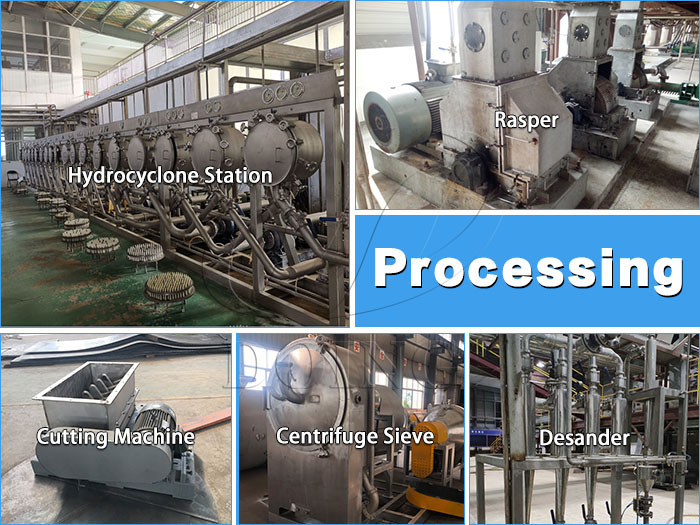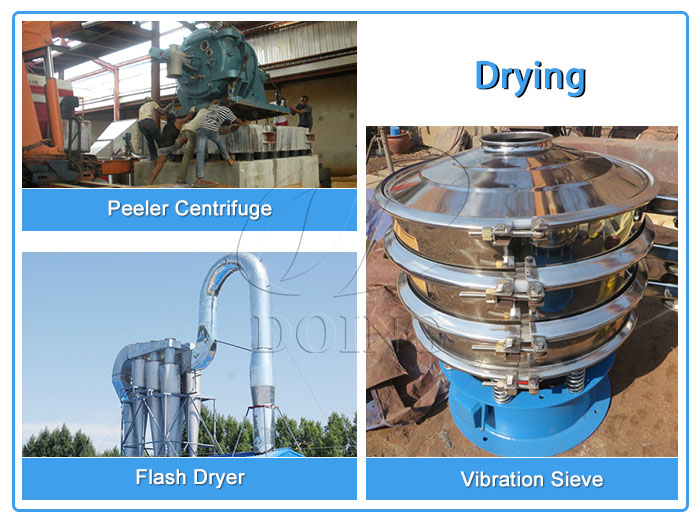Blog
 2024-09-27
2024-09-27Cassava roots are widely grown in African countries. In addition, the tuberous crop is easy to grow, resulting in low raw material costs. At the same time, cassava end-products such as garri, cassava flour, and cassava starch are expensive. As a result, further processing of cassava is considered a profitable industry and is strongly supported by the government. Of all the products, starch has the largest market. In this article, we will briefly introduce machines used for tapioca starch factory.
 tapioca starch factory
tapioca starch factory
The tapioca starch factory consists of three parts: a washing section, a processing section, and a drying section. The production line runs fully automatically, which can ensure high starch yield. Starting from the input of fresh cassava tubers, high quality tapioca starch can be obtained in about half an hour, and then the products will come out continuously.
 Cleaning section of tapioca starch factory
Cleaning section of tapioca starch factory
Cleaning section of tapioca starch factory
This part is the pretreatment of raw materials. Firstly, the fresh cassava roots will be put into the feeding hopper, and then they will be transported to the dry sieve machine by the belt conveyor. The dry sieve equipment will remove the impurities attached to the cassava surface. Finally, cassava is thoroughly cleaned by using a paddle washer.
 Processing section of tapioca starch factory
Processing section of tapioca starch factory
Processing section of tapioca starch factory
In the section, cleaned cassava is first cut into small pieces by a cutter and then dropped into the rasper machine for thorough pulverization. Here the starch will be released as much as possible to ensure a high yield of final starch. The cassava mash will then be pumped into a centrifugal sieve to remove the fibers, and then through a hydrocyclone station to separate the proteins, from which we will get pure starch milk.
 Drying section of tapioca starch factory
Drying section of tapioca starch factory
Drying section of tapioca starch factory
The section is divided into two parts: starch dewatering and drying. The starch milk from the processing section is first pumped to the dewatering machine which is called a peeler centrifuge, from which we can get wet starch with a moisture content of around 40%. The wet starch is then fed into a flash dryer for final drying. The flash dryer dries starch in a short period and yields starch with a moisture content of about 12-14%. The moisture content of the final tapioca starch can be adjusted according to the customer's requirements. After drying, a sifter and packer are recommended to complete the production.
The above is a brief introduction to machines used in tapioca starch factory. If you are interested in setting up such a factory, feel free to contact us to get more details.
Want to know more about our products or services? Fill out the contact form below, and we’ll to get back to you and you will get the price list. Please also feel free to contact us by email or phone.( * Denotes a required field).